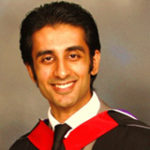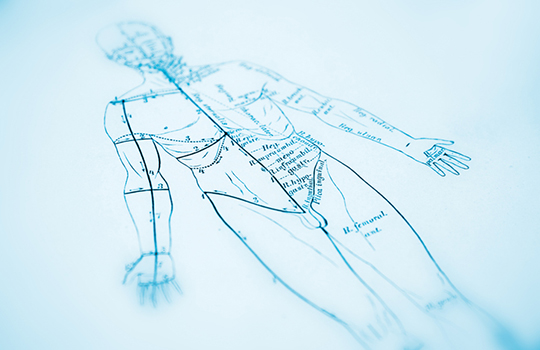By their own admission, medical students tend to forget their anatomical knowledge when entering into clinical practice. It is common for surgical supervisors to question whether anatomy had ever been taught in an adequate and relevant manner, and they often find themselves having to revise the relevant topics with the students again. Anatomy professors have also been roped in to filling this gap at our institutions. Cadaveric teaching is considered the gold-standard for teaching anatomy, but the vast subject can be made more interactive, immersive, and memorable with the introduction of multimedia teaching aids. [1] When properly embedded within the curriculum, these can make learning anatomy (i.e. the basic science) much more engaging for medical students. [2] Despite scientific evidence supporting the use of digital pictures, videos, and text, and how these aid learning, it is still unclear why technology alone cannot replace human interaction. What other possible factors are at play? Could it be that the attitudes and expectations of medical students has changed through generations and technological dependency in general life? [3,4]
In order to try and find a plausible justification, we introduced a video with interactive questions and answers (Q&A) within a class studying ear, nose and throat (ENT) anatomy. Qualitative and quantitative feedback towards such blended tutorials (with video) were obtained from both students (via surveys) and instructors (personal communication). Notwithstanding the small sample size of this study (n = 30), it gave us a sense of what is desired by students and staff. Medical students obviously enjoyed learning the subject much more with such an interactive approach compared to one without interactive video. Specifically, they liked the Q&A features that allowed an immediate response, and the possibility to revise the subject at their convenience. Younger teaching staff are prepared to embrace the use of videos, but the more senior staff seem less likely to do so.
What contributes to this lukewarm reception to a blended approach? In order to understand this, one needs to appreciate the history of medical education itself. Numerous reports have attempted to highlight the issues affecting medical education, but none have succeeded in reversing the problem. [5] One needs to understand that the medical profession is one based on apprenticeship, tradition, beliefs, assumptions, and pride. [6,7] It therefore takes much humility and wisdom even to acknowledge that there is a problem. Perhaps then medical teaching and practice can be improved substantially. Changes need to be made in how medical education is taught globally.
One needs to accept that it is necessary to revise the medical curriculum and we must be prepared to accept changes however uncomfortable. Despite the vast potential benefits associated with using technology to improve the teaching of anatomy, purists may avoid this simply because of their inability to change their mind-set. Such resistance may also be associated with prevailing wisdom, tradition, and ego. To further complicate things, there must be agreement as to what should be taught in the curriculum (e.g. learning objectives), and who is best suited to do the teaching. These issues aside, the students themselves may also have contributed to the resistance to change as some reflected in their feedback about the lack of human touch with the use of technology, and the resulting loss of interactivity in the process. Similar to the issues encountered in Problem Based Learning (PBL), some students prefer having a teacher tell them what to learn, rather than engaging with interactive methods of teaching, as they need to learn the subject as soon as possible. [8]
In summary, if one can tackles the issues head on, overlooks the politics and personal ego, blended teaching of basic regional anatomy taught in a clinical context (e.g. observing the glottis via endoscopy in a video) will improve student’s understanding of anatomy. This early intervention may very well clear the path for change to happen throughout medical education.
 Eng-Tat Ang is a senior lecturer in the Department of Anatomy at Yong Loo Lin School of Medicine, National University of Singapore, Singapore. He teaches gross anatomy and histology to first year medical and allied health students. He is also involved in collaborative learning with the clinicians.
Eng-Tat Ang is a senior lecturer in the Department of Anatomy at Yong Loo Lin School of Medicine, National University of Singapore, Singapore. He teaches gross anatomy and histology to first year medical and allied health students. He is also involved in collaborative learning with the clinicians.
 Kapil Sugand is a research postgraduate at the Faculty of Medicine, Department of Surgery & Cancer, Imperial College London.
Kapil Sugand is a research postgraduate at the Faculty of Medicine, Department of Surgery & Cancer, Imperial College London.
References:
- Sugand K, Abrahams P, Khurana A. The anatomy of anatomy: a review for its modernization. Anatomical sciences education 2010;3(2):83-93. doi: 10.1002/ase.139 [published Online First: 2010/03/06]
- Mayer RE. Applying the science of learning to medical education. Med Educ 2010;44(6):543-9. doi: 10.1111/j.1365-2923.2010.03624.x
- Holland WW. Perspective: lessons from the past. Int J Health Plann Manage 2016;31(1):5-24. doi: 10.1002/hpm.2271
- Phelan N, Davy S, O’Keeffe GW, et al. Googling in anatomy education: Can google trends inform educators of national online search patterns of anatomical syllabi? Anat Sci Educ 2016 doi: 10.1002/ase.1641
- Frenk J, Chen L, Bhutta ZA, et al. Health professionals for a new century: transforming education to strengthen health systems in an interdependent world. Lancet 2010;376(9756):1923-58. doi: 10.1016/S0140-6736(10)61854-5
- Ludmerer KM. The History of Medicine in Medical Education. J Hist Med Allied Sci 2015;70(4):656-60. doi: 10.1093/jhmas/jrv035
- Dornan T. Osler, Flexner, apprenticeship and ‘the new medical education’. J R Soc Med 2005;98(3):91-5. doi: 10.1258/jrsm.98.3.91
- Koh GC. Revisiting the ‘Essentials of problem-based learning’. Med Educ 2016;50(6):596-9. doi: 10.1111/medu.12794
